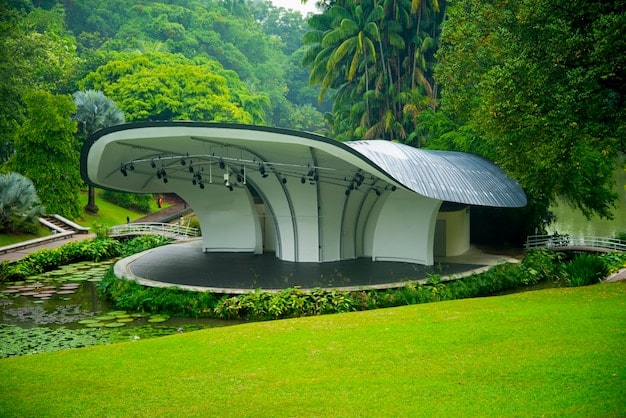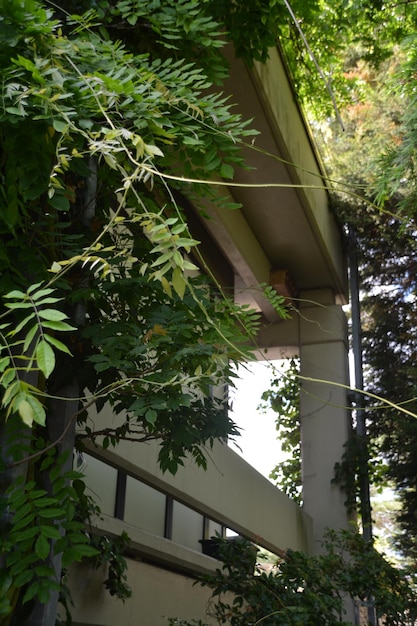5 Unexpected Ways to Cut Your Home Energy Use by 15% in 2025

Reducing home energy consumption by 15% in 2025 can be achieved through unexpected strategies like optimizing smart home device settings, leveraging weather-responsive landscaping, using heat-reflective window films, uncovering vampire loads, and adopting advanced kitchen energy-saving practices.
Want to slash your energy bill and make your home more sustainable? Discover 5 Unexpected Ways to Reduce Your Home’s Energy Consumption by 15% in 2025, and get ready to be surprised!
Optimizing Smart Home Devices for Maximum Savings
Smart home technology is designed to make life easier, but are you sure it’s not actually eating into your energy savings? Optimizing your smart home devices could unlock significant energy reductions.
Reviewing Schedules and Routines
Take some time to review the schedules and routines you’ve set up for your smart devices. Are they truly optimized for your lifestyle, or are they simply running on default settings?
Adjusting Standby Power Settings
Many smart devices consume a surprising amount of power even when they’re in standby mode. Explore the settings of your devices and adjust the standby power consumption to the lowest possible setting.
- Smart Thermostats: Ensure your thermostat is programmed to adjust temperatures automatically based on occupancy and time of day.
- Smart Lighting: Use motion sensors and dimming capabilities to reduce energy waste when rooms are unoccupied or require less light.
- Smart Plugs: Use smart plugs to completely cut off power to devices that draw power even when turned off, such as TVs and gaming consoles.
In conclusion, a thorough review and optimization of your smart home devices can lead to unexpected energy savings. By carefully adjusting schedules, standby power settings, and integrating occupancy sensors, you can significantly reduce your home’s energy consumption.
Weather-Responsive Landscaping: Nature’s Energy Shield
Landscaping isn’t just about curb appeal; it can also play a crucial role in reducing your home’s energy consumption. Strategic planting can help regulate temperature and shield your home from extreme weather conditions.

Planting Deciduous Trees for Summer Shade
Deciduous trees lose their leaves in the fall, allowing sunlight to warm your home during the winter months. In the summer, their dense foliage provides shade, reducing the need for air conditioning.
Using Vines for Insulation
Climbing vines, such as ivy or wisteria, can provide a natural layer of insulation for your home’s walls. This helps regulate temperature and reduce energy loss.
- Southern Exposure: Plant trees on the south side of your home to provide shade during the hottest part of the day in summer.
- Windbreaks: Create windbreaks using shrubs or trees to reduce wind chill and heat loss during the winter.
- Rain Gardens: Install rain gardens to capture rainwater and reduce runoff, which can also help moderate soil temperature.
Weather-responsive landscaping is an innovative and eco-friendly way to reduce your home’s energy consumption. By strategically planting trees, using vines for insulation, and creating windbreaks, you can harness the power of nature to create a more energy-efficient home.
Applying Heat-Reflective Window Films
Window films are thin, transparent films that can be applied to your windows to reduce heat gain in the summer and heat loss in the winter. These films can significantly reduce your energy bill.

Understanding the Benefits of Heat-Reflective Films
Heat-reflective window films work by reflecting a significant portion of the sun’s rays, reducing the amount of heat that enters your home. This helps keep your home cooler in the summer, reducing the need for air conditioning.
Choosing the Right Type of Film
There are different types of heat-reflective window films available, each with its own unique properties. Consider factors such as the amount of sunlight your windows receive, the climate in your area, and your personal preferences when choosing the right type of film.
- Solar Control Films: These films reflect sunlight and reduce heat gain, ideal for hot climates.
- Low-E Films: These films reduce heat loss in the winter and heat gain in the summer, suitable for all climates.
- Glare Reduction Films: These films reduce glare and eye strain, making your home more comfortable.
Heat-reflective window films are a simple yet effective way to reduce your home’s energy consumption. By reflecting sunlight and reducing heat transfer, these films can help keep your home comfortable year-round while lowering your energy bill.
Uncovering and Eliminating Vampire Loads
Vampire loads, also known as phantom loads, are the energy consumed by electronic devices when they are turned off but still plugged in. These sneaky energy drains can add up over time.
Identifying Common Vampire Load Culprits
Many electronic devices continue to draw power even when they are turned off. Common culprits include TVs, gaming consoles, computers, and phone chargers.
Using Power Strips to Cut Off Power
One of the easiest ways to eliminate vampire loads is to plug your electronic devices into power strips and turn off the power strip when the devices are not in use. This completely cuts off power to the devices, preventing them from drawing energy.
- Unplug Chargers: Phone and laptop chargers continue to draw power even when they are not connected to a device.
- Check Appliances: Many appliances, such as coffee makers and toasters, have standby modes that consume energy.
- Use Smart Power Strips: These power strips automatically cut off power to devices when they are not in use.
Discovering and eliminating vampire loads is an often overlooked way to reduce your home’s energy consumption. By identifying common culprits and using power strips to cut off power, you can significantly reduce your energy bill and make your home more energy-efficient.
Adopting Advanced Kitchen Energy-Saving Practices
The kitchen is often one of the most energy-intensive areas in the home. Adopting advanced kitchen energy-saving practices can help you reduce your energy consumption and save money.
Optimizing Appliance Usage
Using your kitchen appliances efficiently can make a big difference in your energy consumption. Avoid preheating your oven for longer than necessary, and use the appropriate size burner for your cookware.
Using Energy-Efficient Cookware
Energy-efficient cookware can help you cook food more quickly and evenly, reducing the amount of energy required. Look for cookware made from materials such as stainless steel or cast iron.
- Air Fryers: Use an air fryer instead of your oven for smaller dishes, as it uses less energy.
- Instant Pots: An instant pot is a versatile appliance that can cook food quickly and efficiently.
- Induction Cooktops: Induction cooktops are more energy-efficient than traditional electric cooktops.
Adopting advanced kitchen energy-saving practices is a smart way to reduce your home’s energy consumption. By optimizing appliance usage, using energy-efficient cookware, and being mindful of your energy consumption, you can create a more sustainable and energy-efficient kitchen.
Embracing Community Solar Programs
Community solar programs allow you to benefit from solar energy without having to install solar panels on your own roof. This is a great option for renters, apartment dwellers, and homeowners who don’t have suitable roofs for solar panels.
Understanding How Community Solar Works
Community solar projects are typically large solar farms that are owned and operated by a utility company or a third-party developer. Subscribers can purchase a share of the solar farm’s output and receive credits on their electricity bill.
Finding a Community Solar Program in Your Area
Community solar programs are becoming increasingly popular, but they are not yet available in all areas. Check with your local utility company or search online to find a community solar program in your area.
- Net Metering: Excess energy generated by the solar farm is sent back to the grid, and subscribers receive credits on their electricity bill.
- Subscription Model: Subscribers pay a monthly fee for their share of the solar farm’s output.
- Grid Stability: Community solar projects help stabilize the grid by providing a distributed source of renewable energy.
Embracing community solar programs is an innovative way to reduce your carbon footprint and support renewable energy. By subscribing to a community solar project, you can enjoy the benefits of solar energy without the upfront costs and maintenance responsibilities of installing solar panels on your own roof.
| Key Point | Brief Description |
|---|---|
| 💡 Smart Device Optimization | Adjust schedules and standby settings to minimize energy use. |
| 🌳 Weather-Responsive Landscaping | Use trees and vines to shade and insulate your home naturally. |
| 🛡️ Heat-Reflective Window Films | Apply films to reduce heat gain in summer and heat loss in winter. |
| 🧛 Vampire Load Elimination | Unplug or use power strips to cut off power to idle devices. |
FAQ
▼
Vampire loads are the energy used by electronics when they’re off but still plugged in. Reduce them by unplugging chargers and appliances when not in use, or utilizing smart power strips.
▼
Weather-responsive landscaping involves planting trees and vines strategically to provide shade in summer and insulation in winter, reducing the need for heating and cooling systems.
▼
Yes, heat-reflective window films can significantly reduce energy consumption by blocking solar heat gain in summer and preventing heat loss in winter, leading to lower utility bills.
▼
Absolutely. By adjusting schedules, routines, and standby power settings on smart thermostats, lighting, and plugs, you can optimize energy consumption for real savings.
▼
Community solar allows you to access solar energy benefits without rooftop panels. You subscribe to a local solar farm and receive electricity bill credits, supporting renewable energy efforts.
Conclusion
By implementing these 5 unexpected ways to reduce your home’s energy consumption by 15% in 2025, you can create a more sustainable, cost-effective, and comfortable living environment. From optimizing smart home devices and embracing weather-responsive landscaping to eliminating vampire loads and exploring community solar programs, taking small, consistent steps can lead to a significant overall impact on energy conservation.





